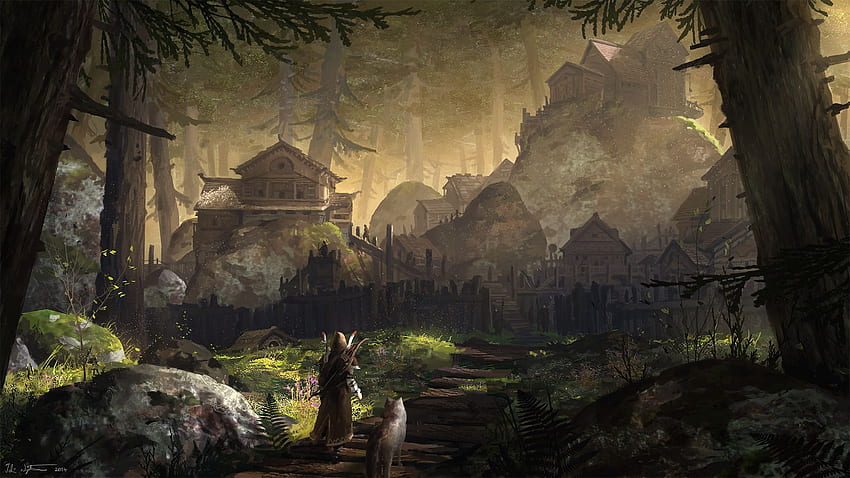Difference between revisions of "Hamlet"
Tao alexis (talk | contribs) |
Tao alexis (talk | contribs) |
||
| Line 9: | Line 9: | ||
=== Population === | === Population === | ||
| − | {| class="wikitable" style="float: | + | {| class="wikitable" style="float:right; margin-left: 25px; text-align: center; background-color:#d4f2f2;" |
|+ | |+ | ||
! Buildings !! Population !! [[Hovel (dwelling)|Hovels]] !! style="width: 140px"|Presence | ! Buildings !! Population !! [[Hovel (dwelling)|Hovels]] !! style="width: 140px"|Presence | ||
Revision as of 23:15, 22 December 2022
A hamlet is a group of rural dwellings that are too small to be considered a village, but possess an organisation that places them above thorps. There are four types of hamlet, associated with type-6 and type-5 hexes, depending on whether one or two hammer symbols are present. These four types, described below, are familiarly known as communal hamlets, bailey hamlets (or "hamlet forts"), free hamlets or reeve hamlets (also known as "gallows hamlets").
Contents
In most cases, hamlets are made up of free persons, though the amount of freedom varies, as does local admistration. Very little opportunity for trading exists, though some products — like bread, flour, river access or a place to safely camp are readily available, depending on the hamlet encountered. The basis of prosperity for most everyone is the production and transshipment of food, wood and stone.
Communal Hamlet
Communal hamlets occur in Type-6 hexes that lack significant rivers (2 pts. or more) — indeed, these communities may be entirely dependent on groundwater wells. They're small and agrarian in nature, with a large part of the local hex's farmlands gathered together in a communal holding. While the inhabitants are free, ownership and harvests are collectivised for the good of all. A hamlet differs principally from a thorp in that the hex's farmers have chosen to dwell in a close-knit community rather than remain scattered through the countryside.
Population
| Buildings | Population | Hovels | Presence |
|---|---|---|---|
| communal holding | 5d6+20 | 8-10 | always |
| garner | 2d4-1 | 1 | always |
| gong farmer | 1-2 | 1 | always |
| stable | 2d4 | 1 | always |
| ox tether & hovel | 2-4 | 1 | no road better than a cart path exists |
| saw pit & hovel | 2d4+3 | 2 | hamlet located in a forested range |
| shearing station | 2d4+1 | 1 | sheep reference |
| windmill | d4+d6 | 1 | located on barren, steppe or sea-side type-1 hex; see text |
A communal hamlet is sure to include a garner, stable, water well, gong pit and between 11-13 hovels. This accounts for a minimum of 29-67 people. Additional persons are added by other facilities existing, as indicated by the table shown.
Saw pits are supported by nearby woodcutters who maintain a hovel in the hamlet. Windmills may also occur if there hills in the hex, within a mile of the hamlet. There may be up to three windmills; a gristmill for certain; a fulling mill if a fibre, cloth or clothing reference exists; and a winepress if there are three references to grapes and wine. Millers and their families dwell in hovels near the windmill.
Altogether, the largest communal hamlets, which possess every possible facility, have 45-121 people (average 83) and 18-20 hovels.
